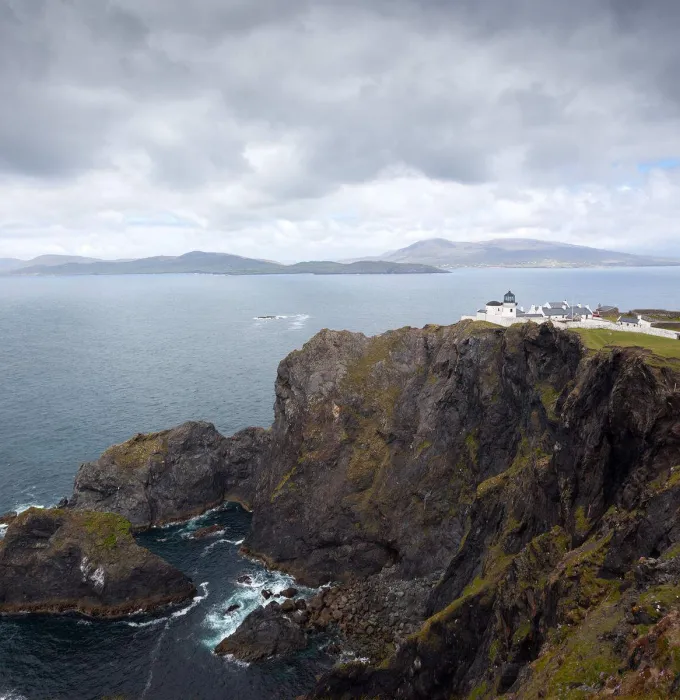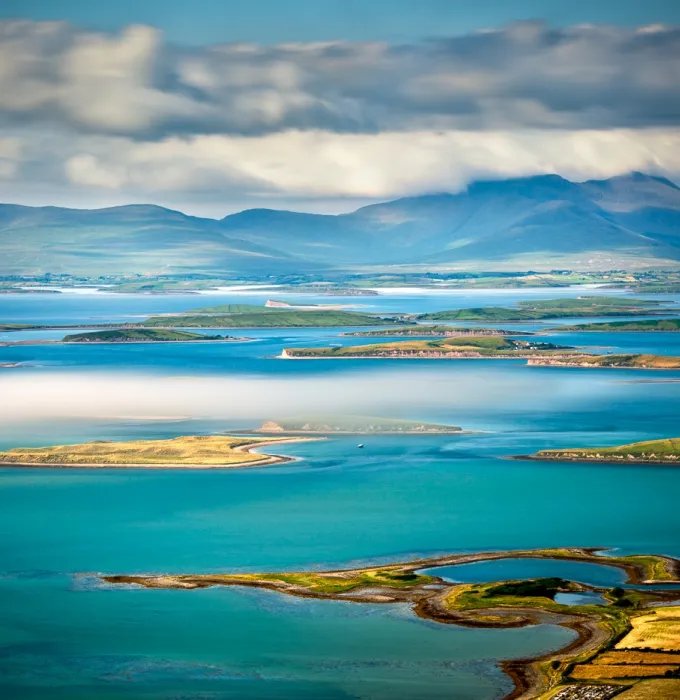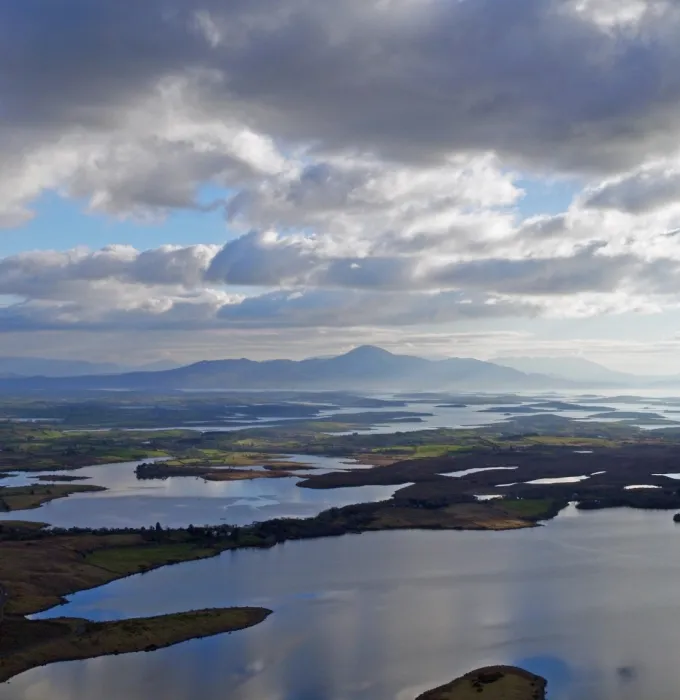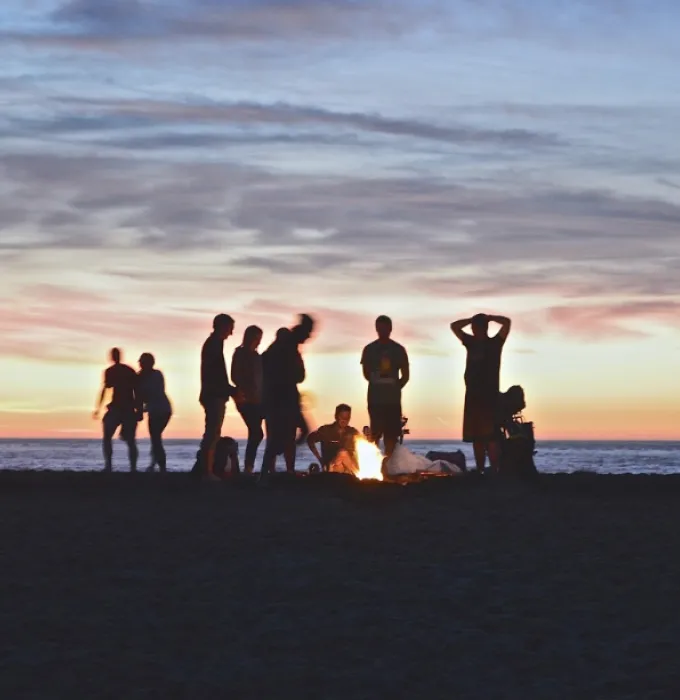Inishturk lies just over 14km off the Mayo coast, between Inishbofin and Clare Island. Its name comes from the Irish name Inis Toirc, meaning Island of the Wild Boar. The boars may be gone, but its still pristine landscape is still wild. Home to around 60 islanders, and just 5km by 2.5km in size, this little piece of paradise offers visitors a taste of real island life and a genuinely warm welcome. But that’s just the start of it… Here are our top ten reasons to take the 40-minute ferry ride from Roonagh Pier, just south of Westport, to spend the day (or longer!) on Inishturk.

Ten Reasons to Take a Trip to Inishturk
1. The Sandy Beaches
Sitting pretty on the island’s eastern side are the unspoilt, sheltered beaches of Tranaun and Curraun, swathed in soft, fine sand and lapped by clean, crystal-clear waters.
Lie back and let your worries melt away on these gorgeous, pristine beaches, as you gaze over the turquoise water to Mayo and the mountains of Connemara. Inishturk is blessed with its own microclimate, and on a clear day, you can watch the clouds forming far away, as they cast shadows over the mainland, while you feel smug in the sun. Bliss…
2. Majestic Sea Cliffs
Visitors to Inishturk are flabbergasted by the beauty of the island’s dramatic, towering sea cliffs, which run from the island’s northwest side down to its southerly side. A trip the vantage point for the Buachaill Mor and Buachaill Beag (Big Boy and Little Boy) sea stacks is a must – prepare for your jaw to drop! From here, follow the cliff tops down to the distinct ridge of Dromore Head for some more incredible views. Dromore Head is the most south-westerly point of the island and an ideal spot for a spectacular sunset photo.
3. The Sensational Seafood
You haven’t tasted crab until you’ve tasted freshly caught Inishturk crab. These, along with Inishturk lobster and the island’s many coastal fish, such as pollock and mackerel, are served straight from the sea to your plate in the island’s B&Bs, as well as in Inishturk’s lovely Caher View Restaurant. Thriving since it opened in 2013, Caher View specialises in serving up the island’s seafood, while guests rave about the mouthwatering dishes and the incredible views over the ocean to Croagh Patrick and Mayo’s highest mountain, Mweelrea.
4. Wonderful Flora and Fauna
Tear your eyes away from the epic sea views and cast your gaze downwards towards the island’s amazing flora, some of which are of international importance. Watch out for the rare endangered Spotted Rock-Rose (Tuberaria guttata) – a pretty annual with bright yellow petals that have red spots at their base, towards the centre – as well as Carnation Sedge, Wild Thyme, Foxtail Stonewort and more.
Lovers of winged things will be drawn to the cliffs, where numerous bird sanctuaries are breeding grounds for Fulmars, Guillemots, Black Guillemots, Razorbills and those most charming of birds, Puffins. Keep an eye on the surrounding sea too, as the island’s waters are a favourite playground for dolphins, seals and whales.
5. Wild Walks
Inishturk’s rugged, hilly landscape and maze of country roads will have walkers itching to explore the island on foot. There are two way-marked trails, a green route that follows a gravel track and a longer ‘purple route’ that heads off-road.
The green one, the 5km Lough Coolaknick Loop, is the shorter one. It takes around an hour to an hour-and-a-half, and is an easy stroll along country road and green tracks. It loops around the lake that lies north of the Inishturk’s centre point, and travels right down the middle of the island to wind back again along the southern part.
The second, purple way-marked walk (the Mountain Common Loop) is 8km, taking in mountain commonage to reach the cliffs. A little more challenging, this walk takes around two to two-and-a-half hours.
6. Seafest & Regatta Weekend
Inishturk’s Seafest & Regatta Weekend is an annual celebration of all things related to the sea and island life. The 2019 festival takes place on July 20-21, and will include sea foraging, fish filleting demos, yoga and mindfulness on Tranaun Beach, live music and sean nós dancing. If you need a good excuse to hop on the ferry, now you have one. You’re welcome.
7. Ireland's Most Senic GAA Pitch
This GAA pitch has to be seen to be believed. Sitting in a natural amphitheatre with rugged hills rising on all sides, it looks as though it were hewn from the rock by the gods.
The football field was completed in 2010 and the dressing rooms were constructed in 2012 – and the islanders are deservedly proud of this massive achievement, a testament to determination and spirit of community. Inishturk hosted the famous All-Islands football tournament in 2012 and 2015. This unique event takes place on a different island every year, including Cork’s Bere and Whiddy Islands, Donegal’s Arranmore, Galway’s three Aran Islands and Inishbofin, and Mayo’s Inishturk and Clare Island.
8. Spirit of Place Sculpture
Designed and built by American architect Travis Price’s Spirit of Place sculpture, entitled ‘Tale of the Tongs’ sits on the island’s northern edge, beside tranquil Lough Coolaknick, looking out over the sea. It pays homage to the countless Irish who have emigrated over the years, as well as to those who were left behind. The traditional story, the Tale of the Tongs, tells of how, when people were emigrating long ago, they would take their tongs and a coal from their fireplace and bring them to a neighbour or a mother, brother or sister. They would place that coal in their fire, leaving their tongs there – until they, or a member of their family, returned to reopen their house and set a fire there again.
9. Jump Into a Lagoon
Ireland’s only off-shore-island natural lagoon lies at Portdoon on Inishturk, overlooked by the remains of a 9th-century dún, or fort. (This dun, which was originally used by invading Norsemen to store gold gleaned from their raids, gives this beautiful little harbour its name, from Port An Dún.) As a natural lagoon, it is only accessible by small boats or curraghs, as the entrance is very narrow.
Portdoon is a truly amazing place to take a dip at high tide – you can jump off the pier into its crystal blue waters. If you go for a dip (and we highly recommend that you do!) you’ll be able to see right down to the sea floor – and spot so many fish you’ll feel your floating in an aquarium.
10. Ruins
For such a small island, Inishturk has an extraordinary wealth of archaeological sites. Inhabited on and off since 4,000 BC, it contains the remains of Beehive huts around the lake area that have been dated to 1500 BC, alongside evidence of Fulacht Fia, ancient cooking sites. The dún at Portdun is a testament to the tempestuous Norse and Viking times, while an old church on the island was in use in the penal times. The church’s west end dates back to the 16th century, while the east end added in the Famine times. (Interestingly, its roof was taken to repair a church roof on the mainland in 1877.)
Perched on the island’s highest point are the remains of a signal tower, a Martello Tower built between around 1805, during the Napoleonic wars. Ever fearful of a French invasion, the British built eighty-two towers along the western seaboard, and Inishturk was no 57.













